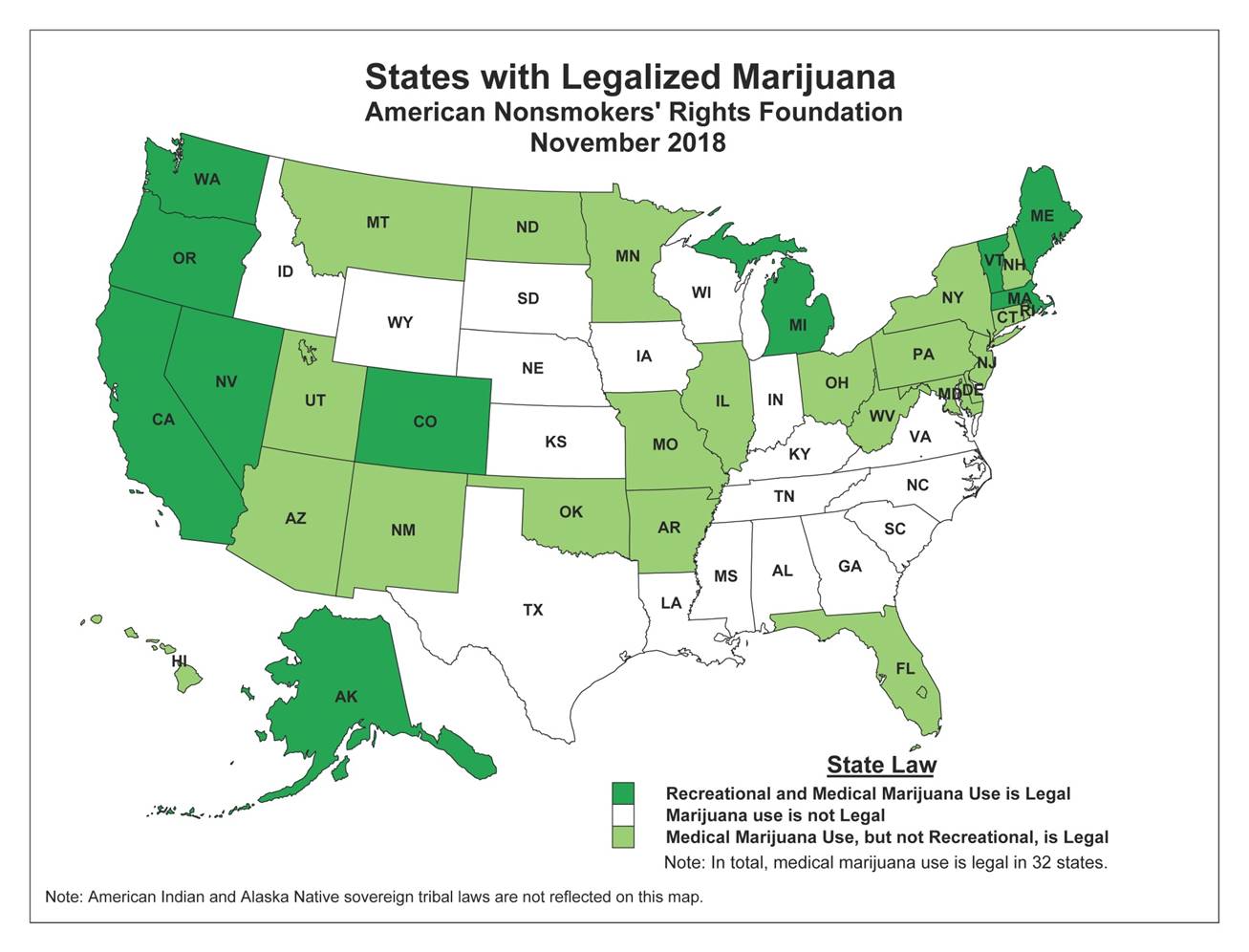Following the 2018 November general election 32 states plus the District of Columbia now have legalized medicinal marijuana use, and 10 of these states plus D.C. have legalized recreational marijuana use. The most recent ballot shows support for marijuana measures reaches across party lines with questions winning by large margins in red states. Voters in Utah and Missouri legalized medicinal use (receiving 52% and 65% of the vote, respectively) and Michigan added recreational use to their existing policy that allowed for medicinal use (with 56% of the vote).
In North Dakota, a poorly worded measure failed to pass with 59.5% of voters saying no to expanded legal, recreational pot use. Even with the failure in North Dakota, this marks an all-time high for the number of states following the legalization trend and making way for the burgeoning marijuana industry. When states legalize marijuana for recreational or medical use, there can be significant implications for current and future smokefree protections.
See ANR Foundation’s related resources here.
Source:
New York Times 2018 Election Results
The new marijuana industry is reminiscent of the old tobacco industry. Their motive is to normalize marijuana use everywhere, including smoking the product in public places and workplaces. Even the way the product is being consumed with electronic devices like vape pens which are capable of dual-use for both tobacco and marijuana. The development of regulations to respond to legalization of marijuana is often influenced by industry insiders and attorneys, while public health is left out. All of this poses a unique threat to smokefree policies that have been effectively protecting workers and patrons from secondhand smoke.
ANR Foundation Associate Director, Bronson Frick, says, “While more research is needed, we know for certain that smoke is smoke—secondhand smoke from marijuana and tobacco behave in similar ways and pose significant risks to the bystander. We have to come together to act now to keep these products from sickening people where they live, work, and play.”
We are already learning about how to address the risk of exposure to marijuana smoke from places like California and Colorado where successful smokefree laws have been popular for decades, creating a true public health benefit. Including marijuana in the definition of smoking and restricting its use where smoking is not allowed is the only way to effectively protect against the dangers of secondhand smoke. We need to be watchdogs to the industry and ensure that public health has a seat at the table when it comes to influencing decision makers and protocols to keep people safe.







